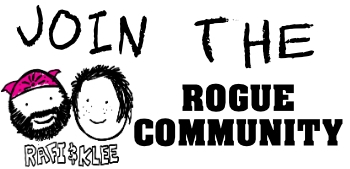Today, I want to dive deep into a topic that’s been on my mind lately – the dubious advice artists often encounter when seeking mentorship and guidance. I had a recent encounter with someone who claimed to be an expert in the art world, and their advice left me utterly flabbergasted.
So, let me set the stage for you. A fellow artist, let’s call her Dana, reached out to me with a burning question. She was about to have a Zoom call with an artist mentor, and something just didn’t sit right. She had come across some material from this mentor that felt out of sync with her values and artistic beliefs. Dana was concerned about whether she should heed their advice or not.
This got me thinking. Many of you, like Dana, seek guidance and mentorship from professionals or invest in art programs. And while there’s absolutely nothing wrong with that, it’s crucial to be discerning about who you choose to learn from. Your values and artistic principles should align with those of your mentor, especially when it comes to the subjective world of art.
Let me make something crystal clear: My views and experiences are unique to me, just as yours are to you. There’s no one-size-fits-all formula for success in the art world. That’s why I always advise taking my thoughts with a grain of salt. It’s all about finding your individual path and style, not blindly following someone else’s.
Now, let’s dissect some of the baffling advice Dana received:
Art Shouldn’t Be Just About Self-Expression: The mentor claimed that focusing solely on self-expression is narcissistic and unhelpful to the world. Well, I vehemently disagree. Art has always been about self-expression, and there are countless artists like Frida Kahlo who used their work as a form of personal expression. Don’t let anyone tell you otherwise.
Gallery Representation Is a Must: This mentor insisted that you won’t have a successful art career without proper gallery representation. But this idea is outdated. Many artists thrive without galleries, and some, like me, prefer to sell directly to their audience. The mentor’s switch from being an artist to running a gallery is suspiciously convenient, don’t you think?
Large Body of Work Before Going Public: Another cookie-cutter piece of advice claimed that you must amass a large body of work before going public or approaching galleries. But who defines “large”? The truth is, you should keep creating, but don’t let arbitrary numbers hold you back. Art is a journey, and you’re always evolving.

Medium Hierarchy: The mentor propagated the idea that oil on canvas is the superior medium, while drawings and illustrations on paper are at the bottom of the barrel. This notion is misguided. Collectors often don’t care about the medium; they care about the art itself. Use the medium that resonates with you.
Labeling Artists: The mentor criticized an artist, claiming what they did wasn’t “art” but “design.” This tendency to pigeonhole artists into neat labels is harmful. All forms of creativity are valid, and no one should decide what is or isn’t art.
Painter vs. Drawer: Lastly, the mentor insisted that if you paint on paper without covering the entire surface, you’re a “drawer” and not a “painter.” This arbitrary distinction is baseless. Your chosen medium and style don’t determine your worth as an artist.
In conclusion, be cautious when seeking advice and mentorship. Research your sources, ensure they have a legitimate background, and make sure their values align with yours. Don’t let anyone discourage you or dictate the “right” way to be an artist.
Remember, there’s no definitive roadmap to success in the art world. Blaze your own trail, create your own rules, and keep putting yourself out there. Don’t let anyone, no matter how “expert” they claim to be, undermine your artistic journey. Your path is uniquely yours, and that’s something to be celebrated.
Thank you for tuning in to my rant today. I truly appreciate your support, and I’m excited to share more with you in the future. Stay inspired and keep creating. You’ve got this! Adios for now.


















